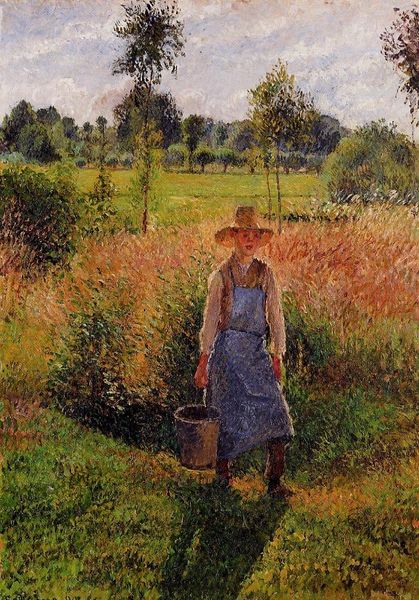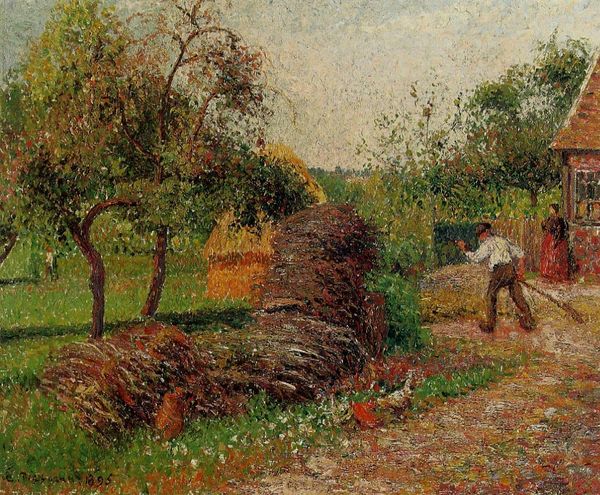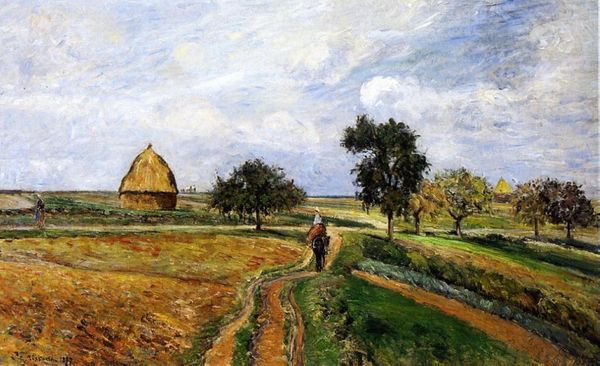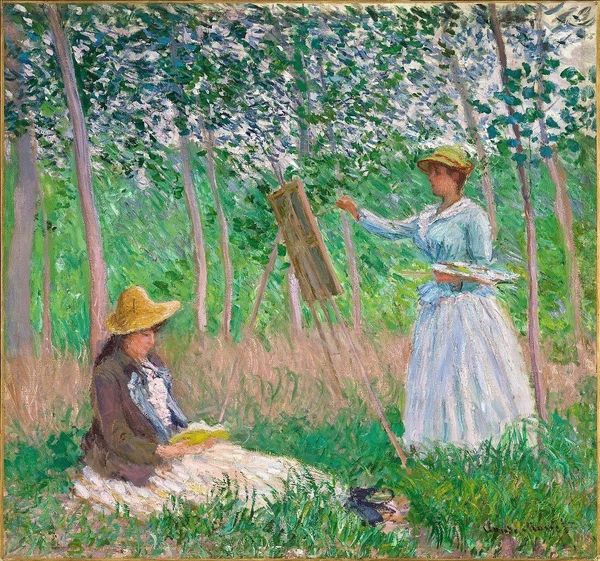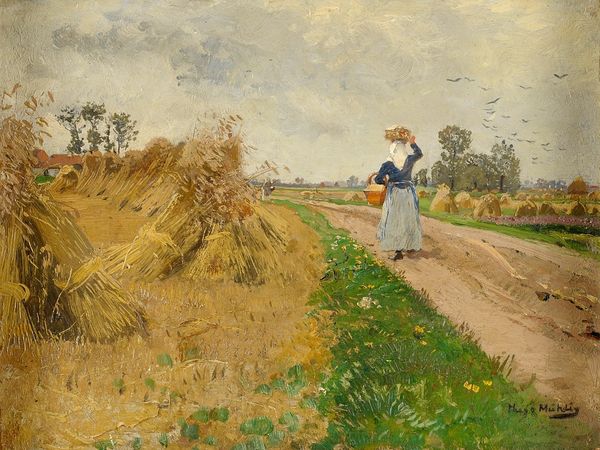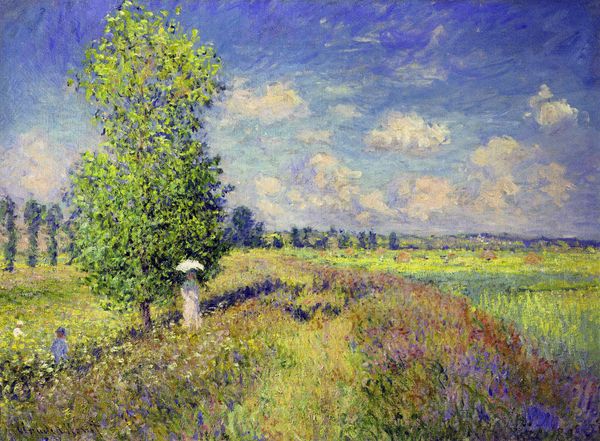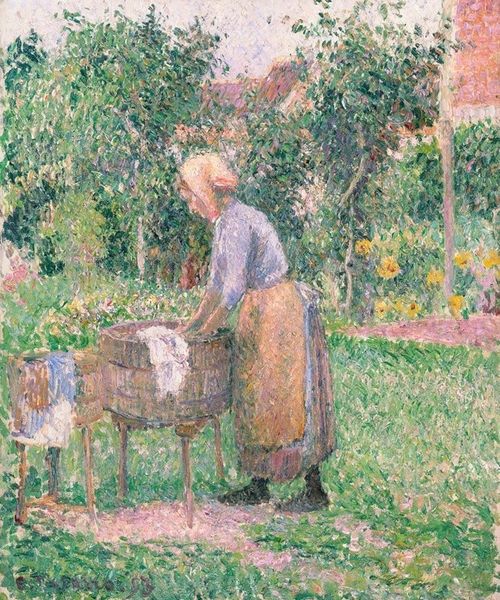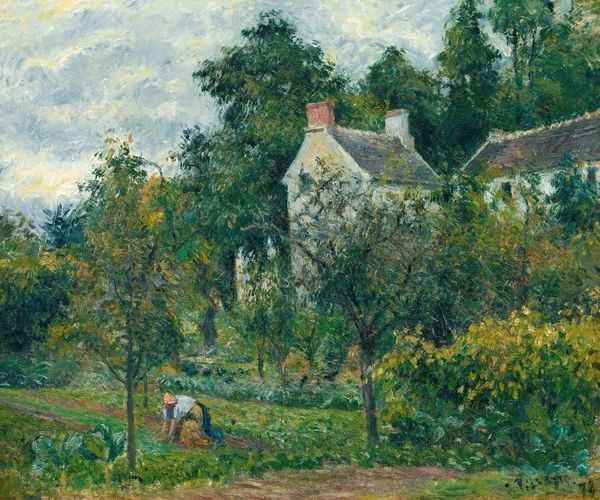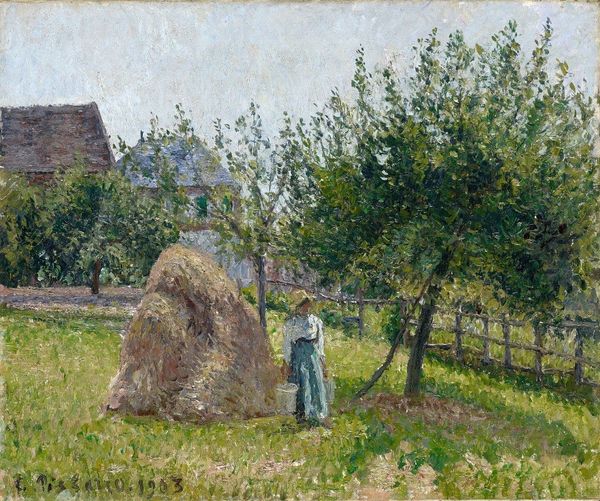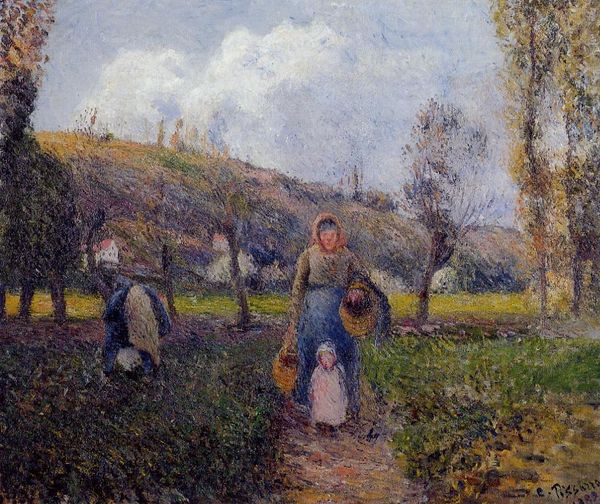
Copyright: Public domain
Curator: The painting before us, crafted by Camille Pissarro in 1899, offers a glimpse into rural life in Eragny through the oil-on-canvas work entitled "Grey Weather, Morning with Figures, Eragny." Editor: It's an incredibly soothing piece. The composition feels very grounded and the muted tones, those gentle greens and ochres, create an immediate sense of serenity. The textures also seem quite varied, making the image visually stimulating. Curator: Absolutely, the brushwork alone places Pissarro firmly within the Impressionist movement, specifically its plein-air branch. It captures a transient moment and freezes labor. It illustrates the modernization of agriculture through the everyday reality of country life. Pissarro had actually moved to Eragny a few years prior, embedding himself within this specific community of peasants and documenting its existence. Editor: I'm fascinated by how the visible brushstrokes, the short dabs and flicks of paint, contribute to the feeling of a misty morning, a bit hazy and indistinct. I see a semiotic exploration, revealing a kind of language between earth and air, between the material reality and atmospheric conditions. Curator: Precisely, but consider also what he doesn’t include. While seemingly pastoral, there's a quiet commentary embedded in what we see: there is only localized activity here and none of the large industrial machines that were transforming agricultural labor are apparent. The painting shows a continuation of older more traditional labor relations. Editor: It does strike me how he juxtaposes a detailed foreground with what quickly becomes an abstraction in the mid- and background. Is that intentional or simply inherent to his technique? I get the impression it really concentrates the focal attention towards the foreground. Curator: I think the intention is more to focus on how changing weather alters visual reality for the working class as an event, not about pure industrial advances, though. The laborers working in a field have to bear this first and foremost, thus it makes sense they're featured so prominently. Editor: It almost comes off as though the workers blend in, like human features absorbed into the terrain itself. It evokes an intimate portrait. Well, regardless, I'll happily let myself get lost within these gentle tones of the harvest once more. Curator: Agreed; it’s fascinating to see how the social and material landscape blend here.
Comments
No comments
Be the first to comment and join the conversation on the ultimate creative platform.
